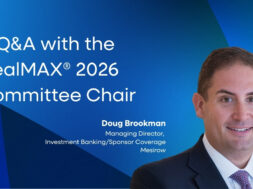The Case for Generalist Investors
For years, conventional wisdom has placed value in industry specialists without recognizing the role generalist investors play in driving growth in the lower middle market.

Over the past decade, generalists in private equity have gotten a bad rap. Maybe it goes all the way back to Adam Smith, but the conventional wisdom today is that unless sponsors can bring a specialized or prescriptive operational playbook to bear, they’ll be at a disadvantage when it comes to winning auctions, creating value and even raising capital.
This helps explain why so many GPs have transformed their partnerships to accommodate these new demands. Research from McKinsey & Co., for instance, cited that among the 25 largest PE funds, each has an internal group of operating partners that provides strategic direction and hands-on support to companies under their watch. The catch is that while this more dogmatic model around value creation may work for Blackstone or KKR, it doesn’t necessarily apply to GPs operating in different ecosystems.
The lower middle market, for instance, can hardly be considered the same asset class. Sourcing strategies are different, capital structures more conservative, and the path to exit more confined. The biggest difference, while tougher to discern, revolves around value creation and how sponsors effect positive change. However, these differences haven’t stopped GPs from latching on to trends around specialization that have redefined the more expansive PE landscape. This shift in emphasis—prioritizing deep industry experience—can have consequences many overlook. A common complaint, one often whispered in management circles, is that the preconceptions of operating partners around “a better way” can amount to blinders that obscure or disregard altogether the experience of the executives they aim to support.
The argument against more prescriptive value-creation models is perhaps best told by the data. In Hamilton Lane’s Market Overview, presented in October 2018, the firm documented a roughly 200% increase in the number of GPs who cite the use of operating partners as core to their investment philosophy. While Hamilton Lane did find a relationship between operating partners and outperformance, the link was only evident among large-market funds. Among small- and medium-sized managers, the data actually revealed that those who didn’t employ operating partners were more likely to be in the top two quartiles than those who did.
Maybe it goes all the way back to Adam Smith, but the conventional wisdom today is that unless sponsors can bring a specialized or prescriptive operational playbook to bear, they’ll be at a disadvantage when it comes to winning auctions, creating value and even raising capital.
None of this is to say that operations are irrelevant. In fact, nearly all GPs would cite growth in the underlying business as the most important return driver. But who is ultimately counted on to impart a strategic vision and then execute against it is up for debate. Most industry specialists, to generalize, bring a narrower perspective in terms of what’s required to drive growth, whereas generalists with a more expansive point of view focus on the success factors that apply across different industries and markets. It’s effectively a nod to the principle of parsimony, or Occam’s Razor, debunking the notion that complex solutions are any more effective than straightforward alternatives.
From the perspective of company management, the exact role that a PE firm assumes in driving growth tends to differ by philosophy. For many, even those who don’t consider themselves to be specialists, helping small or lower middle-market companies professionalize their businesses remains a core part of their investment strategy. The nuance resides in how GPs share this expertise. It can range from board-level support and strategically investing in the business to the operating partner approach in which an industry executive parachutes into the company to serve as a surrogate for the sponsor. The former represents an ownership philosophy backing the vision of entrepreneurs. The latter describes an operator philosophy reliant on the sponsors themselves to articulate and carry out growth initiatives. For a number of reasons, this model tends to fall flat in the lower middle market.
Finding Company and Operator Agreement
The nature of businesses in the lower middle market isn’t typically a fit for the kind of hands-on oversight of operators. Compared to the larger deal realm, this segment has a higher proportion of entrepreneurial or founder-led businesses. In many cases, a PE investment represents management’s first experience with institutional capital.
Most industry specialists, to generalize, bring a narrower perspective in terms of what’s required to drive growth, whereas generalists with a more expansive point of view focus on the success factors that apply across different industries and markets.
Part of what makes the lower middle market so appealing is that growth has often occurred without sophisticated marketing strategies; without dynamic or tech-enabled CRM capabilities; and absent a sophisticated financial planning and analysis function. Moreover, business owners often seek out private equity funding as a way to diversify their net worth. So the capital infusion by itself encourages management to take prudent risks they’re already well aware of.
Another overlooked consideration is that most operating partners themselves bring very little experience working with smaller companies. Procter & Gamble, for instance, has provided a pipeline of executives who have landed across the PE landscape. P&G’s marketing budget exceeded $10.5 billion last year. Most lower middle-market companies, in contrast, have never even worked with an outside advertising agency.
Beyond bringing experience that isn’t compatible, operating partners can introduce new risk given the importance of culture at most smaller companies. In larger organizations, where specific roles tend to be better defined, operating partners provide a plug-and-play capability. Within smaller companies, company culture is more susceptible to outside influences, particularly if the organization questions the motives of operating partners ostensibly there to help.
Defining Growth
Anecdotally, operating partners tend to find success in working with companies further along the maturation curve. It may be an outright turnaround situation, but more often it’s about bringing a fresh perspective to help a plateauing enterprise reset its growth trajectory. In addition to implementing new-business initiatives, it generally entails re-allocating resources or streamlining operations to cut their way to improved fundamentals.
This runs counter to what is required in most smaller companies, where top-line growth comes from adding complementary resources around people, processes and technology. Again, this can be as simple as rounding out an existing management team or it can take form as a more systematic process to identify M&A opportunities. The objective, though, is about recognizing and funding the initiatives that will create a scalable platform and resolving any areas of weakness that may exist.
To be sure, this type of work to professionalize a business represents an operational skillset that is valued by management teams. The difference, and it’s somewhat nuanced, is that it’s a collaborative approach that trusts the vision of executives rather than imposing a vision on an entrepreneur who has spent the past decade or longer obsessing over how they can best serve their target audience.
The irony is that by simply appreciating our longstanding role as an investor, sponsors today can differentiate themselves as the rest of the market gravitates to a new role that tends to be less black and white for business owners.

James Andersen is co-founder and co-managing partner of Clearview Capital, a control-oriented private equity firm based in Stamford, Connecticut. Clearview specializes in the acquisition and development of family-owned and entrepreneur-led businesses


